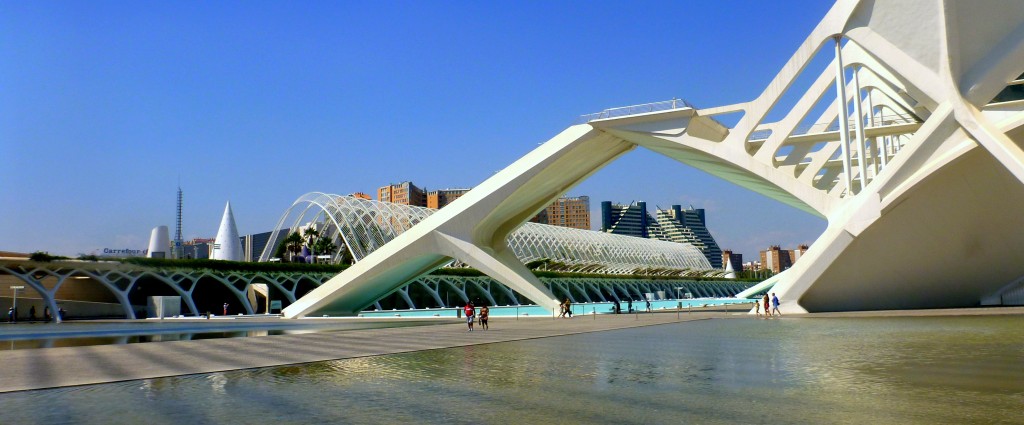
Last September (2014), I was fortunate to attend the 5th Advanced Training Course on Land Remote Sensing, organised by the European Space Agency (ESA) as part of the Scientific Exploitation of Operational Missions (SEOM) programme. This 5-day course took place at University of Valencia, in the sunny eastern Spain, gathering together early career researchers from various countries in an attempt to train the next generation of Earth Observation scientists. This extremely intensive training, delivered by top researchers in the field, covered a wide area of topics and left its participants craving for even more knowledge.
The course was divided into two main groups: SAR and Optical/Thermal, with the second’s programme reported below. The first two days mostly focused on expanding the participants overall knowledge on optical and thermal remote sensing, with advanced sessions provided by J. Moreno and J. Sobrino (Univ. of Valencia). These sessions included, among others, a particularly interesting talk on satellite signal modelling (covering the limitations of currently used leaf and canopy models), as well as a presentation on methods of information extraction and validation. It was followed by an overview of thermal imagery pre-processing steps and methods of land temperature retrieval.
Following this introductory take on remote sensing data processing and signal modelling, the time had come for more specialised sessions; M. Caetano (Foundation of Science and Technology, Portugal) gave a presentation about land cover and land use change monitoring. The applied sessions continued on throughout the third day, with E. Chuvieco (Univ. of Alcalá, Spain) introducing us to fire detection and assessment of its effects, and F. Baret (INRA-CSE, France) speaking about the use of remote sensing techniques for agriculture applications.
On the fourth day, importance was given to multitemporal analysis. L. Bruzzone (Univ. of Trento, Italy) gave an excellent presentation on methods of change detection, which are currently used for various data types (multispectral, VHR multispectral, SAR, VHR SAR and hyperspectral imagery). He also briefly presented an example of multisensor change detection with use of multispectral and SAR data. The day finished with a presentation given by G. Camps-Valls (Univ. of Valencia) on hyperspectral image processing. The last day brought lecture sessions on various remote sensing applications, with E. Tomelleri (EURAC, Italy) giving a talk on carbon cycling and ecosystem modelling, W. Wagner (TU Wien, Austria) on hydrology and climate change monitoring, and T. Wright (Univ. of Leeds, UK) talking about earthquakes and volcanoes observation.

Apart from the knowledge-packed programme, the organisers offered the participants a chance to present their work to the rest of the attendees. During the evening poster session, I presented the current progress of my PhD project, entitled “Remote Sensing of Forest Health in UK”, in which I am investigating the potential of integration of different remote sensing data sources for detection of disease stress symptoms. As the course came to an end, the time had come to say goodbye to warm and sunny Valencia and face the reality of coming back to Newcastle.
I would like to thank the RSPSoc for the invaluable financial help, allowing me to attend this course.
Magdalena Smigaj (2nd Year PhD Student)
Note: All of the abovementioned lectures were filmed and are currently available at ESA’s website within the “Space in Videos” section. They can also be accessed through: http://seom.esa.int/landtraining2014/files/LTC2014_Programme_Materials.pdf
